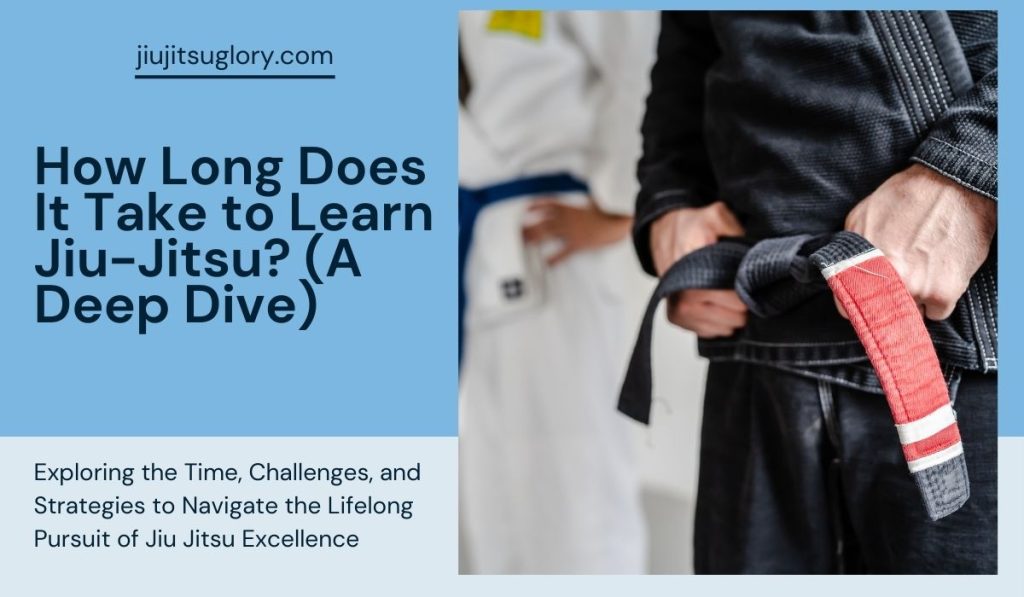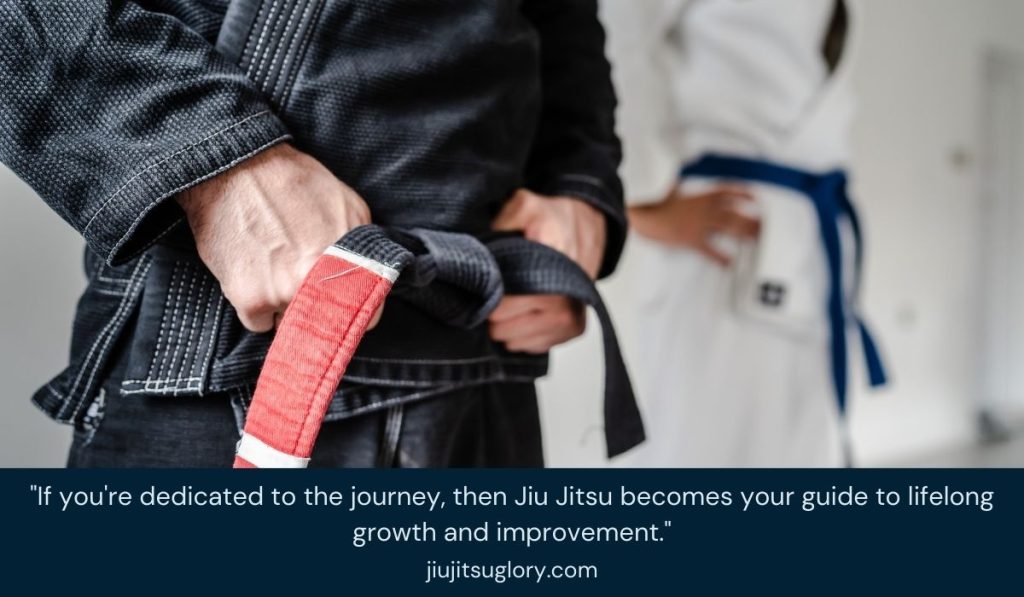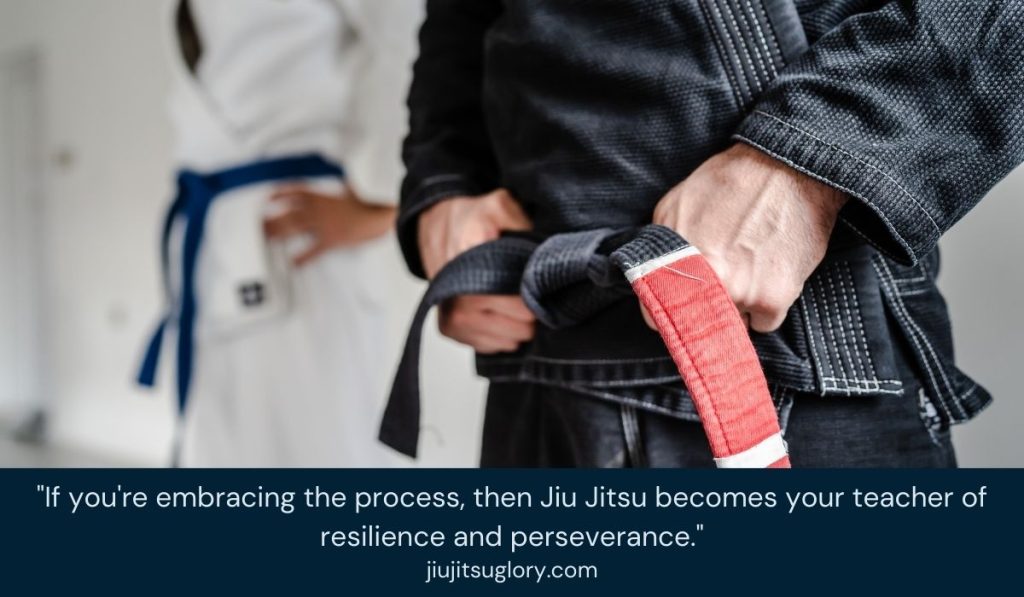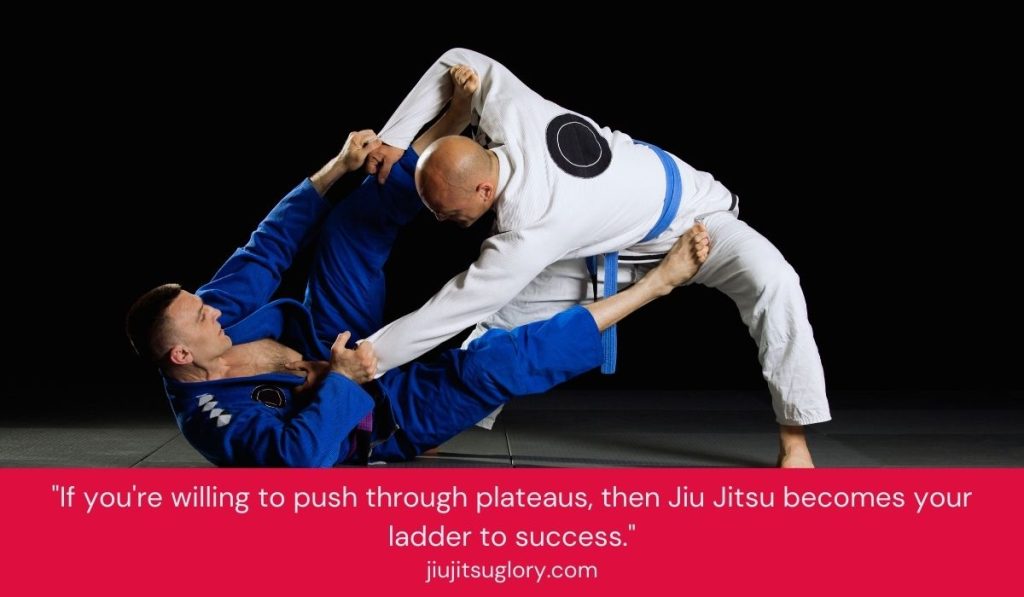Jiu-Jitsu isn’t just a martial art—it’s a lifelong journey that challenges you to grow and improve continuously.
This unique and rewarding sport demands dedication and offers a profound learning experience, whether you’re just starting or have experience in other martial arts.
What Does It Take to Learn Jiu-Jitsu?

Mastering Jiu-Jitsu requires a solid commitment over many years.
You might start as a beginner, but through persistent effort, you’ll move from basic competency to profound mastery.
Learning this art involves several methods:
- Drilling: Repeating movements to build muscle memory and refine your techniques. It demands time and persistence.
- Rolling: Sparring with partners provides real-time feedback and helps you adapt under pressure, though it’s crucial to understand the techniques to avoid forming bad habits.
- Conceptual Learning: Understanding the principles behind the techniques can streamline drilling and rolling, making them more effective.
The Journey to Proficiency: How Long Does It Take to Learn Jiu-Jitsu?

The time it takes to become proficient in Jiu-Jitsu can vary.
Typically, the basics take about six months to a year, while true proficiency often requires two to three years.
Your progress depends on several factors:
- Prior Martial Arts Experience: Experience in other martial arts can provide a helpful foundation, though unnecessary.
- Fitness Level: A higher fitness level can improve your performance, but Jiu-Jitsu also boosts your overall fitness.
- Training Frequency: Regular practice is crucial. The more often you train, the quicker you’ll improve, though balance is critical to preventing burnout.
- Quality of Instruction: Effective learning depends significantly on having skilled, knowledgeable instructors.
- Natural Ability: While helpful, natural talent is less important than dedication and a willingness to learn.
The Learning Curve: Jiu-Jitsu Learning & Growth Expectation

- First Few Months: You’ll face a steep learning curve, getting to the basics.
- First Year: You’ll build a solid foundation and become more comfortable with fundamental techniques.
- Three Years: Expect significant improvement from accumulated practice and competition experience.
- Five Years and Beyond: You’ll have refined your techniques and developed your unique style, though learning in Jiu-Jitsu never ends.
Accelerating Your Jiu-Jitsu Learning

- Consistent Training: Frequent practice helps reinforce what you’ve learned and deepens your understanding.
- Supplemental Training: Additional strength, flexibility, and specialized drills can enhance your capabilities.
- Competing: Tournaments test your skills under pressure and highlight areas for improvement.
- Cross-Training: Practicing other martial arts can broaden your skill set and provide new insights.
Challenges Along the Way
- Physical and Mental Demands: Jiu-Jitsu can be taxing both physically and mentally. Proper warm-ups, rest, and mental resilience are key.
- Injuries: It’s a safe sport, but like any physical activity, there’s a risk of injury. Practicing proper techniques and safety measures minimizes this risk.
- Motivation: Staying motivated can be challenging, especially when progress feels slow. Setting goals and connecting with a supportive community can help maintain your drive.
Conclusion
Jiu-Jitsu offers more than just physical benefits; it’s a path to personal development, resilience, and mental toughness.
Although learning speeds vary, the commitment to regular practice, quality instruction, and a positive mindset will enable you to thrive in Jiu-Jitsu and enjoy its lifelong benefits.
Jiu-Jitsu provides a fulfilling and dynamic challenge, whether you’re looking to compete, improve your fitness, or learn something new.
See Also: Basic Jiu-Jitsu Positions: Your Key to Grappling Success!


